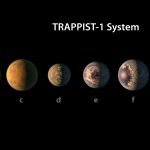Key Takeaways:
- China’s Chang’e-4 mission landed on the moon’s far side in January and included the Lunar Micro Ecosystem (LME) experiment, where cotton sprouted two leaves before perishing due to the cold.
- The experiment involved various life forms within the LME, but only the cotton plant showed signs of growth on the moon’s surface.
- NASA’s interest in growing plants in space stems from the necessity for astronauts’ long-term missions, ensuring access to fresh produce and better nutrients.
- Beyond logistical benefits, cultivating plants in space offers psychological advantages, contributing to astronauts’ well-being during missions.
- NASA’s studies explore the emotional aspects of space dining, including the impact on astronauts’ preferences and how to counteract space-specific challenges like the loss of the sense of smell.
China accomplished a historic feat by landing its Chang’e-4 spacecraft on the moon’s far side in January. This mission was groundbreaking as it conducted an experiment in growing plants on the lunar surface within the Lunar Micro Ecosystem (LME).
The LME sought to create an Earth-like environment, housing various life forms such as potato seeds, cotton seeds, rapeseeds, yeast, fruit fly eggs, and Arabidopsis thaliana – a common weed. Surprisingly, the cotton plant within the biosphere sprouted two leaves, indicating signs of growth before succumbing to the harsh cold temperatures after approximately two weeks.
The chief of the experiment, Xie Gengxin from Chongqing University’s advanced Technology Research Institute, does not intend to publish scientific papers based on this research. Nevertheless, Gengxin expresses a keen interest in further exploring the survival capabilities of diverse life forms in the lunar environment.
NASA’s interest in cultivating plants in space extends beyond the realms of space agencies seeking to embark on extended missions. The necessity arises from the limitation of relying solely on multi-vitamins to sustain astronauts’ health during deep space exploration.
The decay of nutrients in supplements and pre-prepared meals over time, accelerated by radiation, emphasizes the need for fresher and tastier food, achievable through growing produce in space. This initiative not only facilitates better nutrition but also reduces the need for transporting prepared food, optimizing space travel logistics.
The psychological benefits of cultivating plants in space also drive NASA’s interest. Studies indicate that fresh flowers and gardens on the International Space Station contribute to creating a pleasant atmosphere, providing a sense of Earthly familiarity during space journeys. NASA recognizes the importance of these elements for psychological well-being, both on Earth and in the isolated conditions of space.
NASA’s endeavors also focus on enhancing the dining experience for astronauts in space. They’ve included comfort food and festive meals on recent missions, exploring astronauts’ preferences for communal or solo dining, and investigating the emotional impact of space dining. Moreover, research delves into counteracting specific challenges associated with space travel, such as the diminished sense of smell.
Ultimately, while muscle cells might not be a primary concern for NASA’s nutritionists, they place significant emphasis on understanding and addressing the holistic well-being of astronauts during extended space missions.


